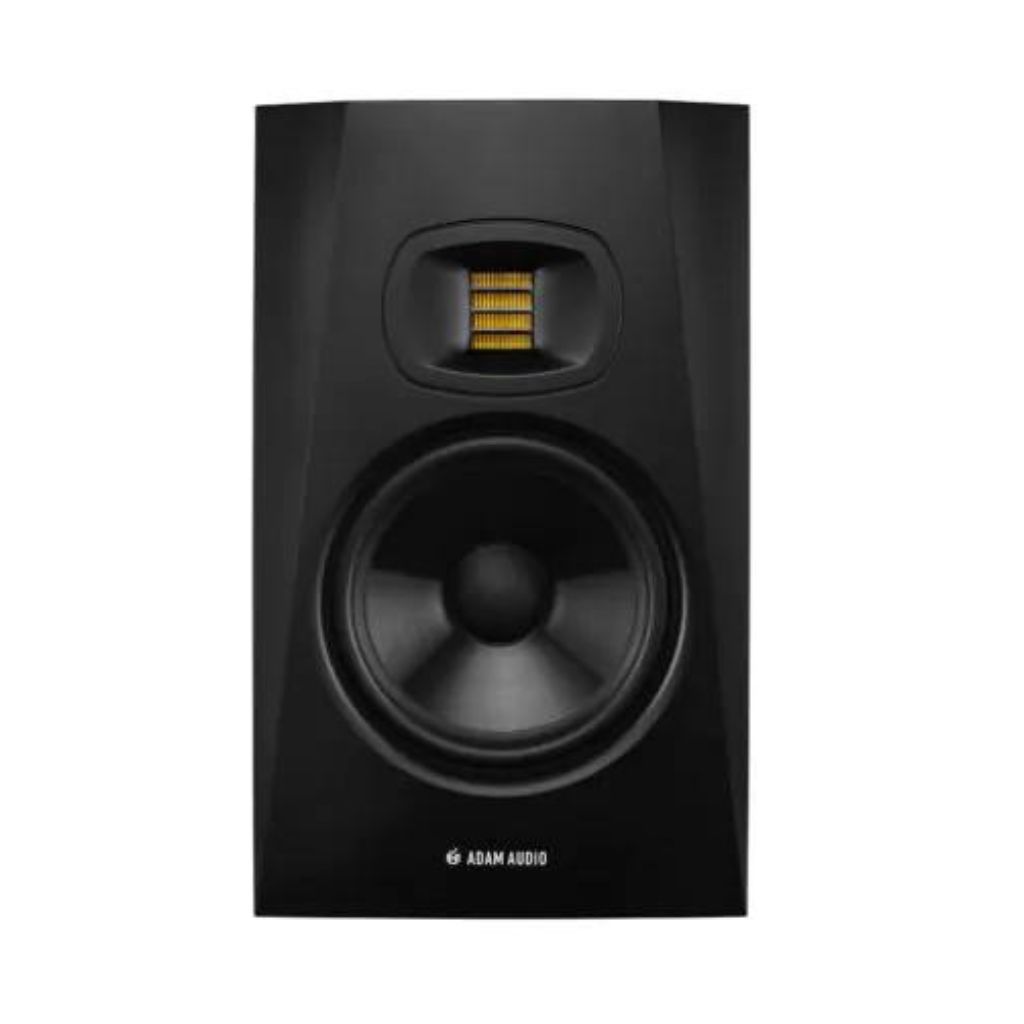ADAM Audio T7V Review
Some months on from the release of their T5V, we look at Adam’s latest entry-level monitor to see how it sizes up
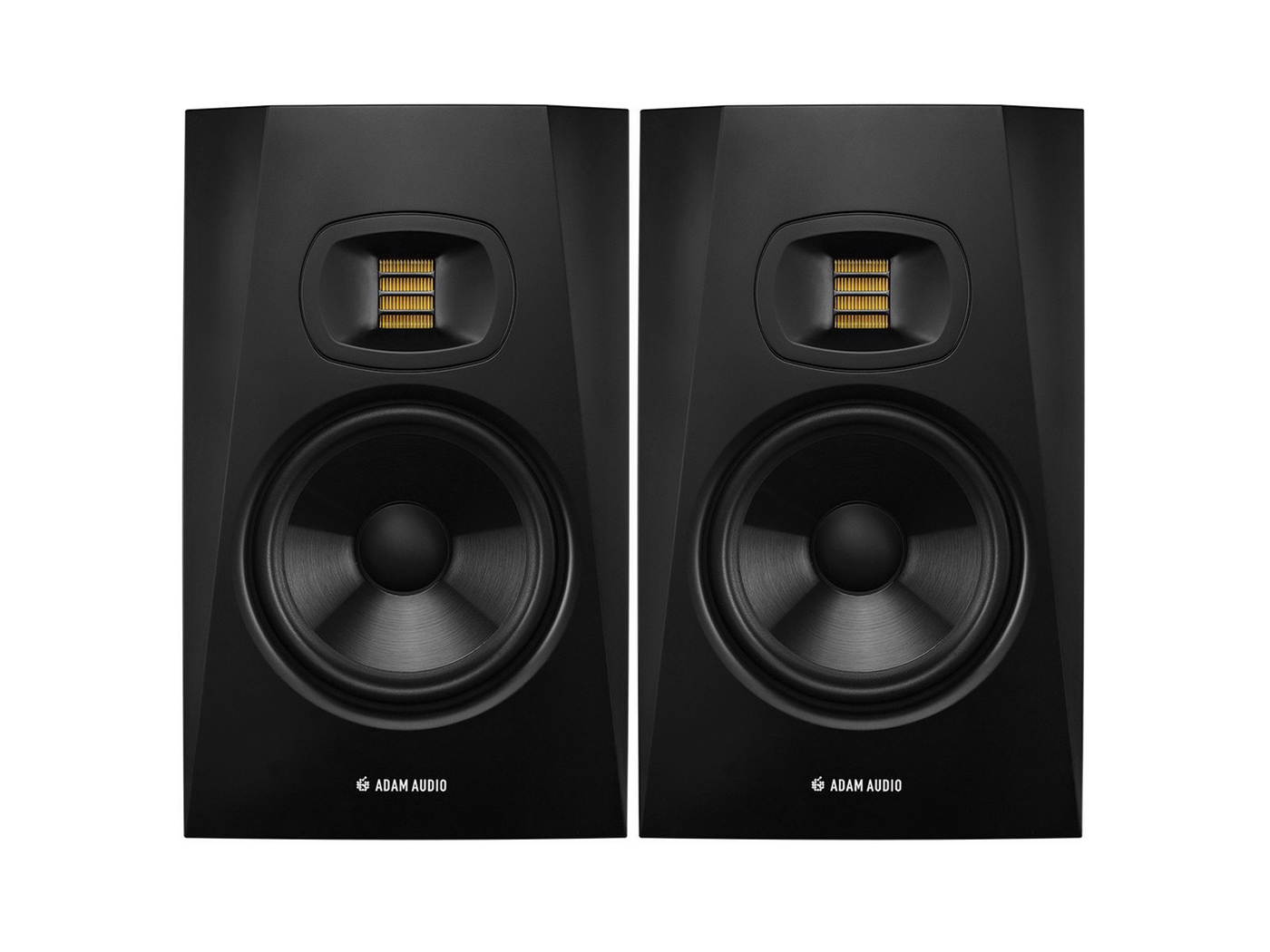
Some months on from the release of their T5V, we look at ADAM’s latest entry-level monitor to see how it sizes up


Price £338 a pair
Contact ADAM Audio
T7V key features:
- U-ART 1.9” ribbon tweeter
- Polypropylene 7” woofer
- HPS waveguard
- Rear firing bass reflex port
- Power RMS 70 watts
- Frequency response 39Hz-25kHz
- Size (h x w x d in mm) 347 x 210 x 293
- Weight (kg) 7.1
A few months ago I reviewed ADAM Audio’s T5Vs, the smaller of the company’s entry-level monitors. They impressed me – and everyone else who heard them – greatly, performing astonishingly well and offering unbelievably good value for money. ADAM has been at the forefront of active studio monitor design for many years, with its larger – and vastly more expensive – monitors employed by many state-of-the-art facilities, including the world-famous Abbey Road Studios.
Keen to hear what the larger of the two entry-level T series monitors have to offer, I now have before me the T7V. Measuring 347mm x 210mm x 293mm (HWD), it’s only slightly bigger than the T5V and is also to be used as a nearfield monitor. The main difference between the two monitors is the woofer; the T7V uses a 178mm (7″) unit as opposed to the 127mm (5″) unit in the smaller model – the clue is in the names.
Same tech, lower price
Common to both models is the 48mm U-ART ribbon tweeter, made from a pleated polyamide film, which draws air into and out of its folds as it expands and contracts. This Accelerated Ribbon Tweeter is a new design for the T series, incorporating trickle-down technology from ADAM’s more costly ranges. It’s a wonderfully efficient design, moving air four times faster than conventional dome tweeters and extending to 25kHz.
The trickle-down benefits don’t stop there however, as the tweeter’s HPS waveguard behaves the same as that used in the company’s flagship S series. The waveguard assists high-frequency dispersal, ensuring a smooth, even response and allowing a wide sweet spot.
An active design, like most studio monitors these days, the T7V’s cabinet houses two PWM (Pulse Width Modulation) amplifiers, one each for each driver. These switching amps are a Class D design, pumping 50 watts into the woofer and 20 watts into the tweeter, making use of power transistors, producing a maximum SPL of 110dB per pair.
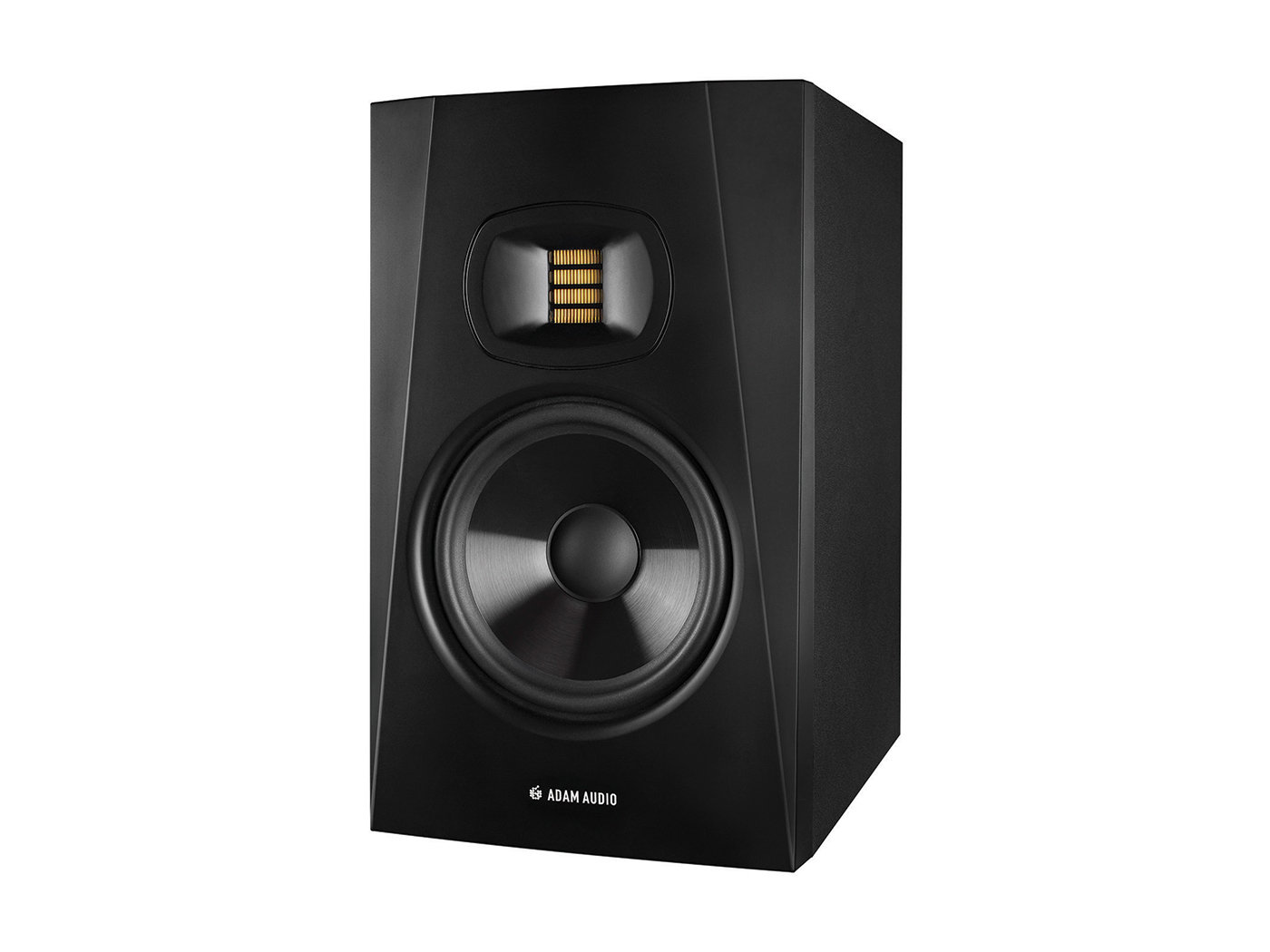
Class D is often thought of as digital amplification, however that’s not the case. The T7V’s amplifiers are highly efficient solid state designs, running much cooler than Class A or Class A/B amps; that’s why no heat-sinks are built into the cabinets.
The cabinet is acoustically optimised to reduce unwanted reflections, featuring a bevelled front panel that adds to the visual appeal of the monitor as well as ensuring excellent sound dispersal. It’s well-built too, with a tough, durable finish capable of taking the odd knock. The rear panel provides XLR and RCA phono input connectors along with a continuously variable volume control and switches for both high and low EQ filters.
The filters offer +/-2dB of shelving equalisation, though in our studio control room the T7Vs sounded best flat. As they have a rear firing bass reflex ports, some users might find the low shelf cut useful if the monitors are sited close to a rear wall.
Listening tests
Firing up the ADAMs and playing some familiar material, I was immediately reminded of what impressed me so deeply about the smaller T5Vs. The treble response is superb, sounding clean and fast with plenty of presence and air. Transients are reproduced with trip-hammer precision yet the presentation is unforced and natural sounding.
The larger mid/bass driver provides greater extension, reaching down to 39Hz as opposed to the T5V’s 45Hz, giving greater authority to bass guitar, for example. This was noticeable when playing The Beatles’ Come Together, a favourite test-track of mine. The bass tone on this track is quite swampy and the T7Vs had no trouble reproducing it smoothly with none of the mid-bass hump that’s often dialled into smaller monitors. The stereo mix of this track is quite wide with the guitar panned
Firing up the ADAMs and playing some familiar material, I was immediately reminded of what impressed me so deeply about the smaller T5Vs. The treble response is superb, sounding clean and fast with plenty of presence and air. Transients are reproduced with trip-hammer precision yet the presentation is unforced and natural sounding. The larger mid/bass driver provides greater extension, reaching down to 39Hz as opposed to the T5V’s 45Hz, giving greater authority to bass guitar, for example. This was noticeable when playing The Beatles’ Come Together, a favourite test-track of mine.
The bass tone on this track is quite swampy and the T7Vs had no trouble reproducing it smoothly with none of the mid-bass hump that’s often dialled into smaller monitors. The stereo mix of this track is quite wide with the guitar panned extreme left and drums panned extreme right, showcasing the T7V’s panoramic imaging skills.
Playing David Bowie’s Ashes To Ashes, which I’d also tried on the smaller ADAMs, I noticed greater depth of sound-stage, the T7Vs having an almost holographic quality. This cavernous character is something of a double-edged sword, being quite inviting and seductive, yet also robbing the monitor of immediacy and some midrange punch.
The Bowie track is a multi-layered production and, while I enjoyed the explicit detailing and deep bass, the snare drum lacked the impact it usually has and the lead vocal sat slightly further back in the mix. This effect is quite mild however – image depth was one of the most impressive qualities of the T5V – yet the larger monitors didn’t manage to pull off this sonic trick quite as seamlessly as its smaller brother.
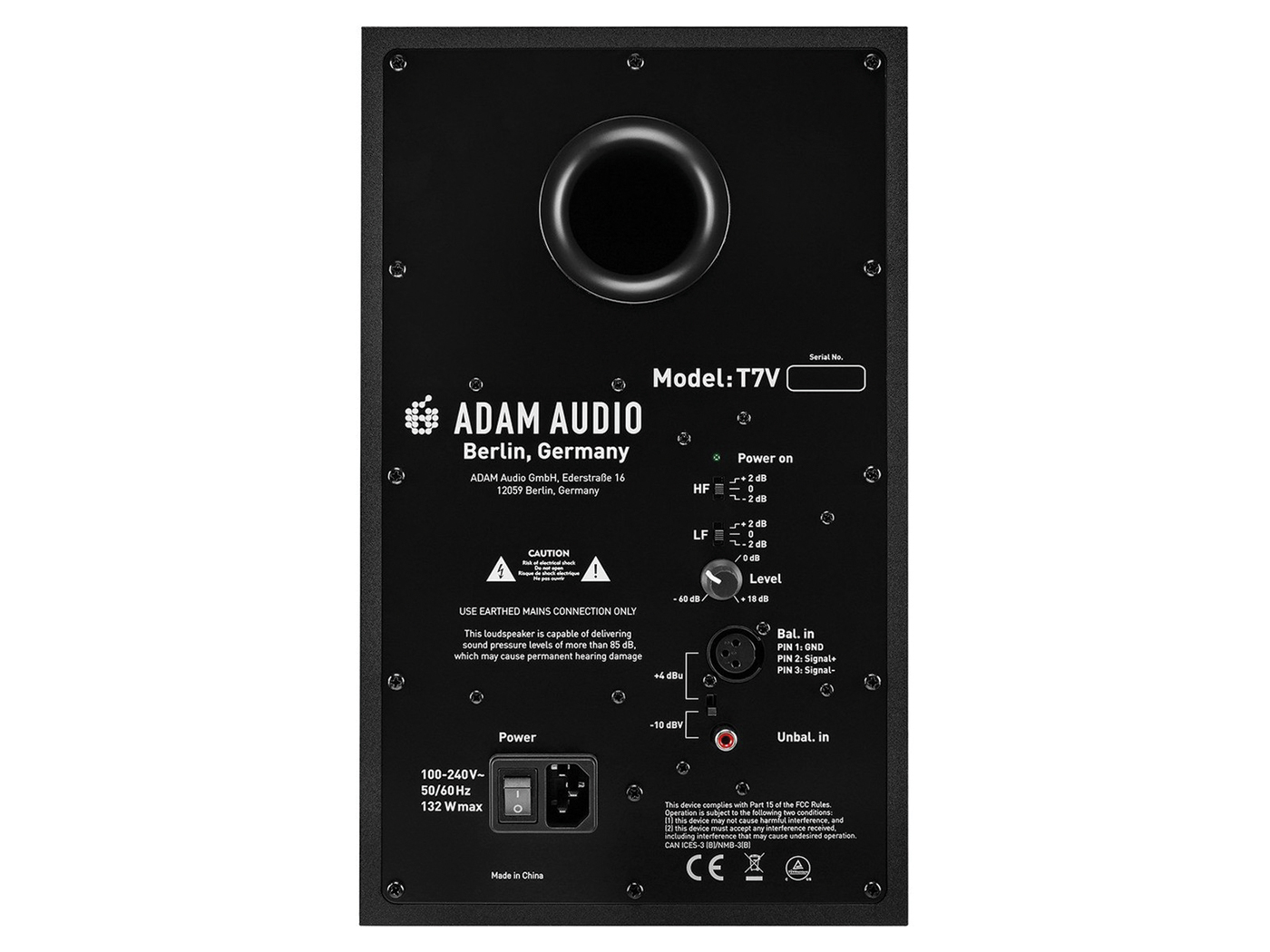
Switching between the T7Vs and our regular ATC monitoring systems (SCM100A mains and SCM25A mid-fields), showed the ADAMs to be basically tonally accurate, with only the faintest hint of bass bloom. Many users will prefer this presentation as it more faithfully mimics the sonic character of much domestic audio equipment; these users would likely find the smaller T5Vs a little lean.
Timbral accuracy is highlighted when tracking and shaping the tone of individual sources, whether by microphone selection or processing audio. The human voice is perfect for assessing the accuracy or character of any piece of equipment as we are so familiar with it in real life, and via the T7Vs it’s easy to hear the distinct character of different microphones with various voices.
The smooth, velvety midrange of our valve Neumann U67 is ideal for intimate, close-mic’d vocals whereas our brighter, edgier AKG C414 suits strident rock and pop vocals better. Similarly, the T7V’s capabilities dynamically are demonstrated when compressing bass guitar, revealing the rumbling bottom-end levelled out nicely to create a solid foundation with punch and clarity throughout the octaves.
Speaking of these monitor’s low-end response, while the T7Vs have fulsome bass that reproduces the lowest notes of a bass guitar faithfully, its physical size does not allow for subsonics. This isn’t a criticism though; no loudspeaker with a seven-inch woofer is going to reproduce a seismic low-end.
Fortunately for producers of music with warp-factor bass, ADAM offers a range of subwoofers for, in their own words, ’lower bass – not louder bass’. Their SUB7 is designed for smaller monitors while the range comprises several models more suited to larger control rooms or workstation environments.
Conclusion
Throughout the entire reviewing process, the T7Vs impressed with their detailed, incisive treble and generous, full-bodied bass. Midrange accuracy and transparency is fine by any standards but it really is exceptionally good at this price point. The T7Vs image well, presenting an incredibly wide, expansive sound-stage rather than pin-point focus of individual instrument placing across the stereo spectrum, while image depth is cavernous.
The smaller T5Vs offer more seamless integration between the two drivers; however they make up for it with a more usefully extended bass response. Maybe it’s the lower crossover frequency of 2.6kHz that makes the treble a tad more obvious and exposed. Both of ADAM’s T range nearfields offer great value for money, punching well above their weight. Audition both if you can to hear which presentation better suits your monitoring requirements.
Do I really need this?
Choosing a set of monitors that work for you is one of the most important music making decisions you’ll ever make, and we always recommend you buy the best you can afford. While there are many brilliant performers costing four-figure sums, trickle down technology from ADAM’s more prestigious ranges means you get a high percentage of the top models’ performance with the T range.
Some nearfield designs – such as the recently reviewed Avantone CLA10 based on the legendary Yamaha NS10 – work best in the context of a more comprehensive monitoring systems. The ADAM T7Vs however, are good enough to perform as the main monitors in most smaller recording set-ups. A wide and deep sound-stage coupled with excellent detail and insight make the T7Vs an ideal choice for budget conscious buyers with high demands.
Alternatives
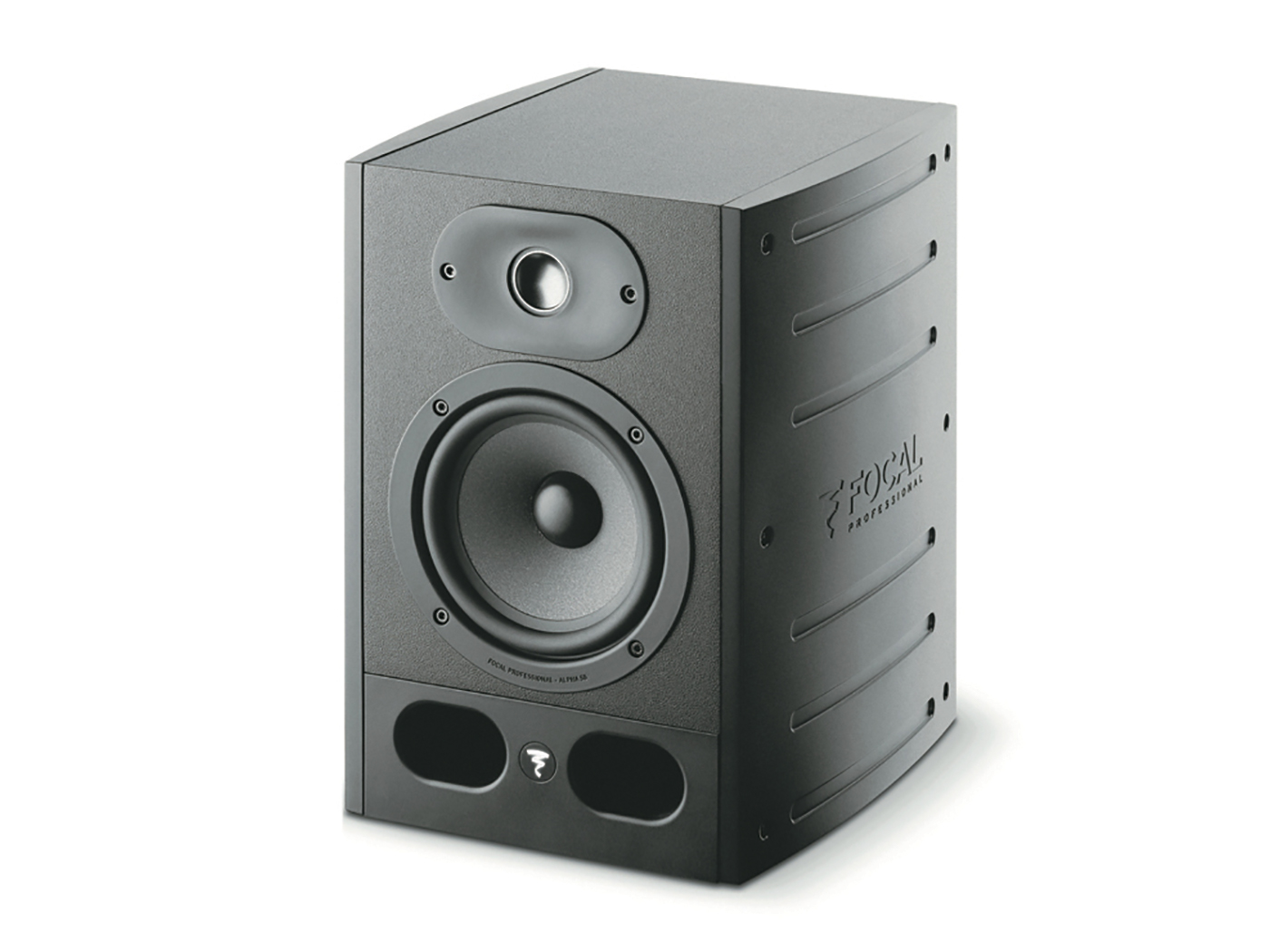
Focal
Alpha Range £400–£510
Astounding clarity, accuracy and tremendous audio quality for the price are assets that Focal’s Alpha series have in common with ADAM’s T5Vs. We were so impressed with them that we gifted them our Gear of the Year award.
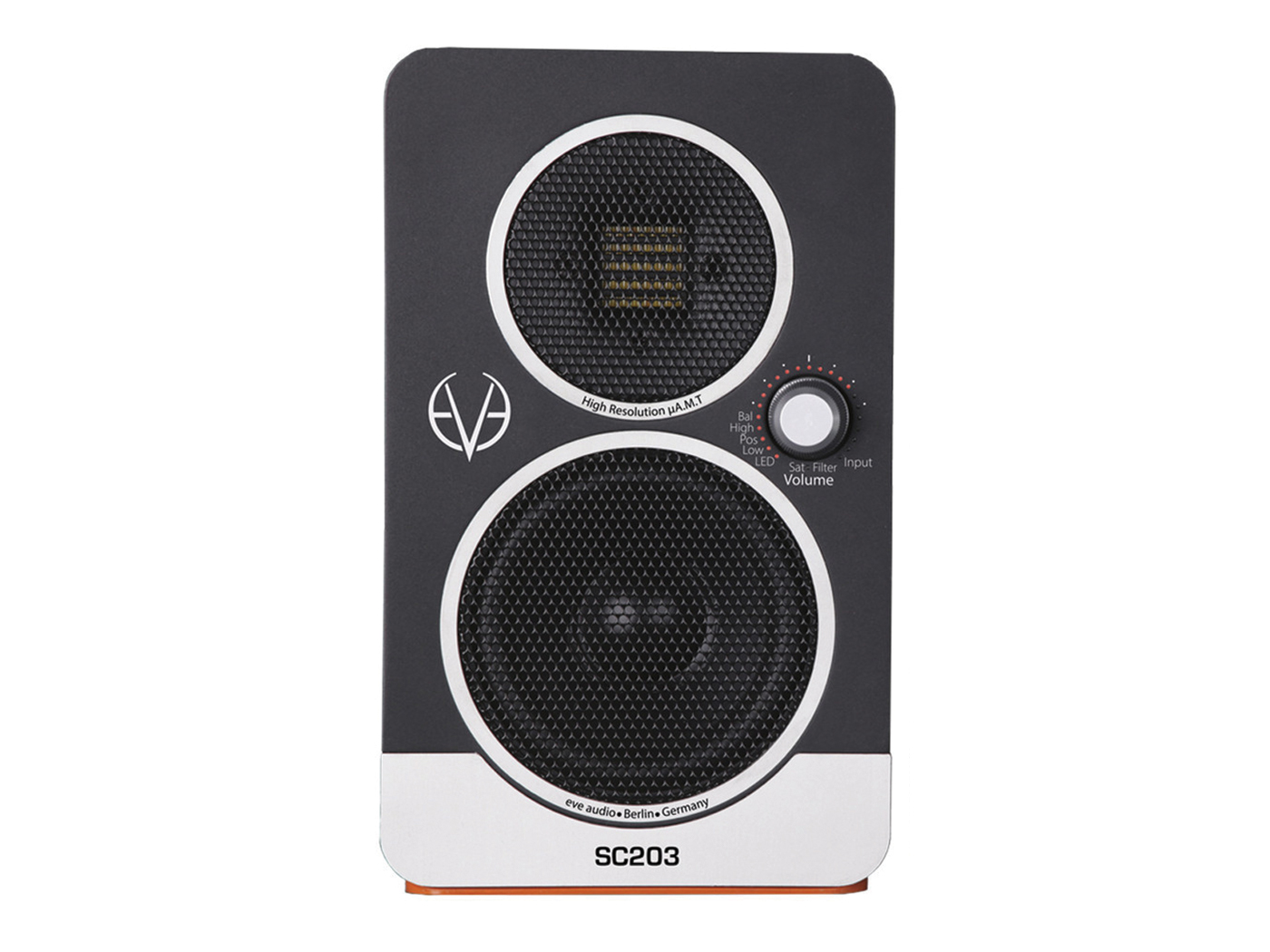
Eve Audio
SC203 £385
Small desktop monitors with a big sound. Standing 7″ tall with a 3″ woofer, they have a full-bodied, yet detailed sound and are ideal for those working in confined spaces and touring musicians/composers.
